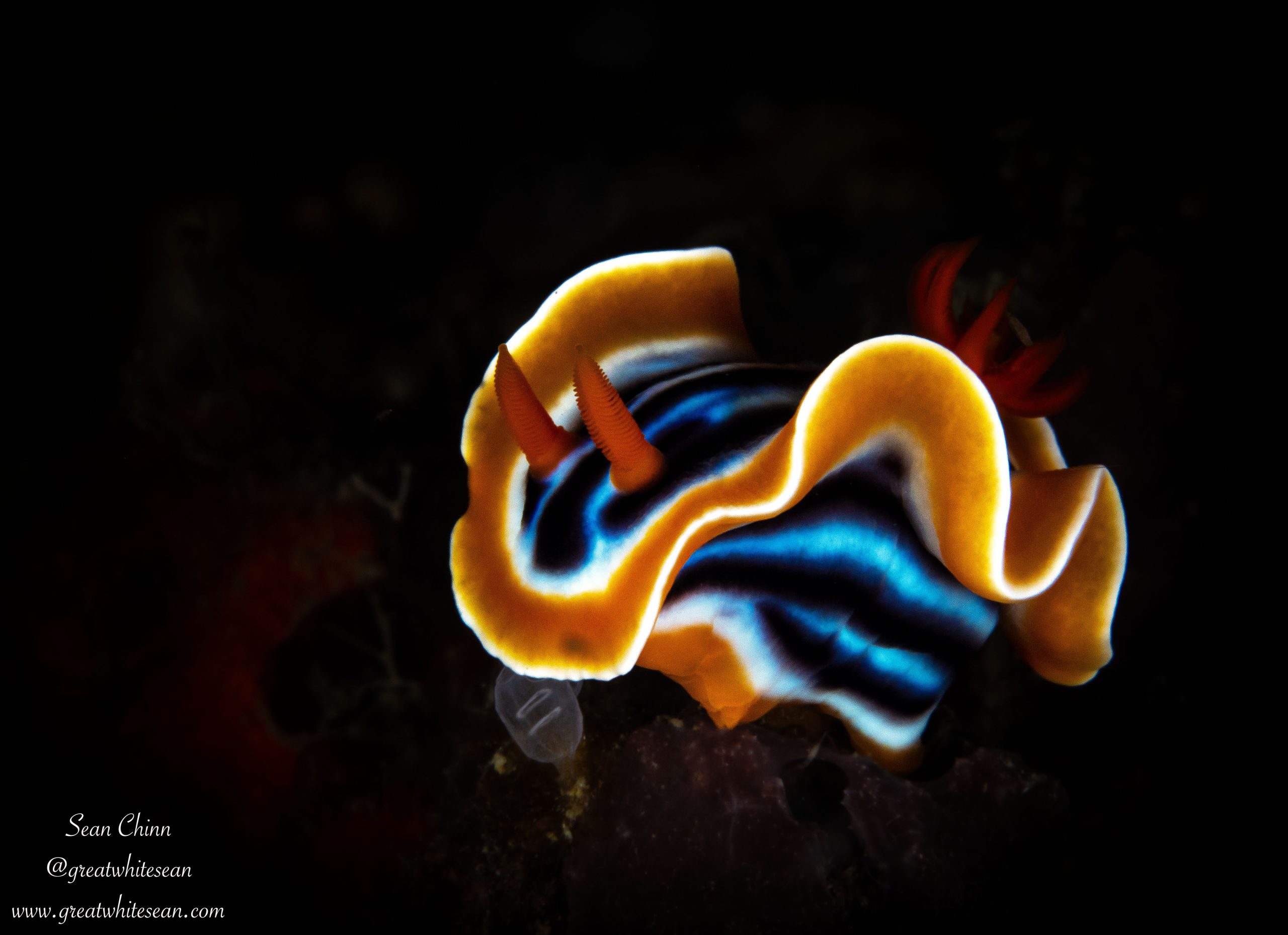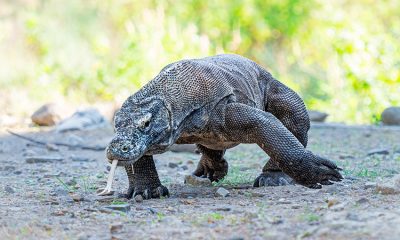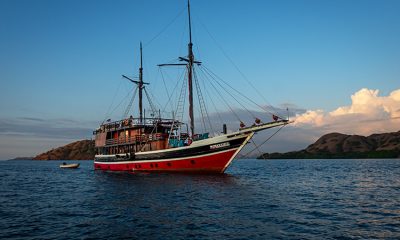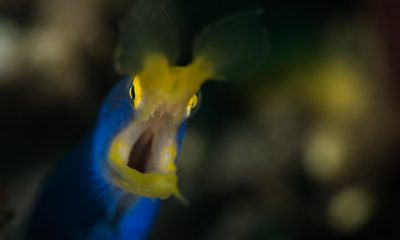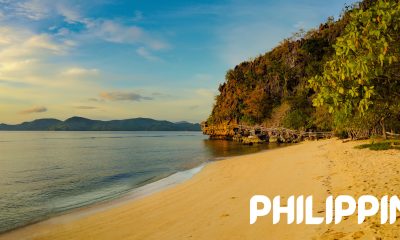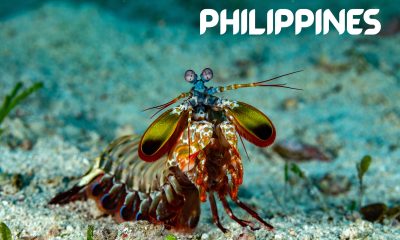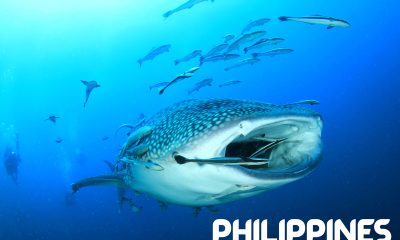Blogs
Thailand Twin Centre: Part Two
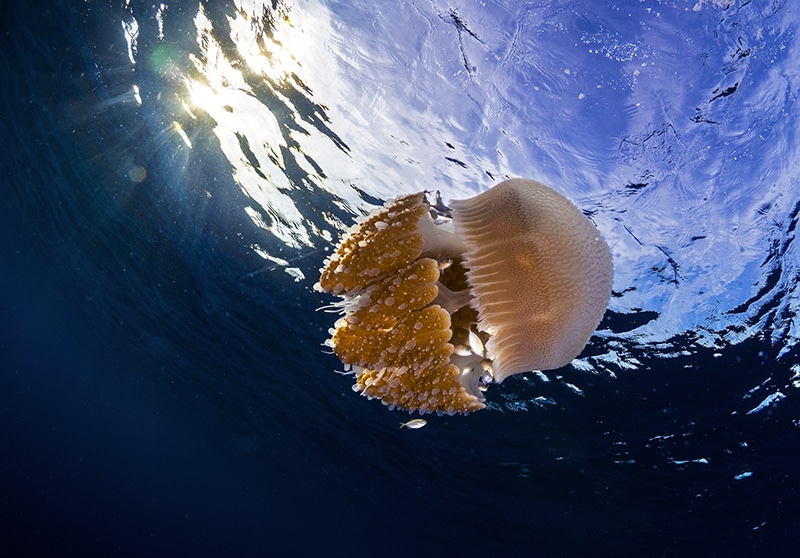
After a two hour journey to the pier, we got a first glimpse of our boat – the MV Sawasdee Fasai – run by West Coast Divers. This was going to be our home for the next few nights and where we would enter the water from. What struck me straight away was the length of the boat. A long boat at 37m, it made for an extremely spacious dive deck onboard. Luckily we weren’t at maximum capacity onboard either. For the dive company this isn’t ideal but for us as divers it meant more space and less divers in the water. The boat has 15 cabins and can accommodate up to 30 guests. We came across most other liveaboards along our journey and I’d say our boat looked to be the biggest and most spacious in the area.

We set sail after a thorough briefing by the boat leader Beto and a delicious dinner prepared by the two chefs onboard. It was five hour sail during the night over relatively calm seas. We woke in the morning to stunning views over the turquoise sea that met with meticulously placed granite boulders at the island’s edge. The islands rose to a modest height but were densely covered in lush green rainforest with white-bellied sea eagles frequently seen patrolling each island. We had arrived at the stunning Similan Islands National Park for our first day of diving.

We were treated to much better visibility diving here compared to some of the sites around Phuket and Phi Phi. 25+ metres was the norm, although the odd thermocline rolling in made the dives more adventurous as they chased us through the water engulfing us in hazy water reducing the vis and the temperature drastically for a very short moment.
Again, scorpionfish were abundant during the dives here and for the first time in my diving life I also got to watch as one awkwardly bimbled along the sandy bottom. The soft coral here was just as stunning as the day diving but was more abundant as gorgonian fan corals dominated the boulders underwater creating interesting swim throughs, especially at the Elephant Head Rock site. The change of current through each turn was interesting to see but did make some of the dives more difficult on occasions. Air didn’t last as long on these dives but the adventure was cranked up a little to compensate.

After dive three we moored up in Donald Duck Bay and had the opportunity to go on the island and marvel at the beautiful white sandy beach surrounded by lush rainforest. After a short but interesting hike up granite boulders in only flip flops to a view point, we were greeted with a view where I instantly knew why this had become a protected national park. The rainforest oozed with life as the soothing sounds of birds greeted our presence and if you listened carefully the ground would talk, as small lizards and insects worked their way through the foliage. One lizard even scuttled across our path.
The coral reef was easily visible through the clear turquoise water as the colour of the sea turned a deep blue the further you looked out. I certainly felt a sense of paradise standing there in awe of Nature’s beauty. Once we returned to the boat it was time for a night dive in the bay and my favourite dive of the day. I love a night dive and after saying I was going to find a pygmy squid, it gave me great joy to catch one in my light. A little guy only about a centimetre in size that I unfortunately lost before I could get my camera focused on it. Other critters were a little more willing to be photographed though and it was an enjoyable dive.

Day Two was the start of our journey north to the islands of Koh Bon and Koh Tachai. The topside view hadn’t changed but we were here as these two islands gave us the better opportunity to hopefully get lucky with some big sightings. Manta rays and whale sharks are the stars of these islands as long as you are lucky. Unfortunately, we were the unlucky ones and they both proved elusive this time. It left me a little despondent after dive three where a ripping current at Koh Tachai Pinnacle left us suspended like waving flags on a mooring line and unfortunately didn’t deliver the whale shark we were hoping to see.
We decided to risk the current at the Pinnacle once more for the sunset dive and luckily for us it had died down and let us explore a site full of life. This dive saved the day and I didn’t let the disappointment of a whale shark being elusive get me down. I could appreciate this stunning site of granite boulders covered in soft coral and full of life surrounding them. We had fish feeding on jellyfish and a titan triggerfish let me get close and photograph it as it gorged on its feast. Then at the surface we had a beautiful white-spotted jellyfish to photograph as the sun was setting.

After a nice leisurely drift dive at the start of day three in Surin Island, it was time to head north again to the site I’d been eagerly anticipating since this trip was organised. Richelieu Rock was the destination and sure enough it didn’t disappoint as it was magnificently manic as soon as you dropped in. Schooling fish engulfed the site as small bait fish were hunted by bigger fish such as giant trevallies, big eye jacks, barracuda and more that would swarm round you as we drifted through the site. It was also the colours of the site that blew me away as soft coral dominated the pinnacles and anemones full of clownfish covered the top of the rocks like a carpet.
Richelieu Rock is also a great site for macro spotting but beware of the current as on some occasions it can be difficult for macro photography as you can’t take it slow exploring the reef. Then even if you do spot a macro wonder, it’s hard to stop and compose the shot without sucking the air out of your tank too quick. Luckily for me the last dive of my trip provided calmer currents and an opportunity to photograph a stunning ornate ghost pipefish, along with a peacock mantis shrimp, some nudibranch, dancing shrimp, and a white-eyed moray. Unfortunately I missed out on a harlequin shrimp that someone else on our boat spotted. A critter that still remains elusive for me. A good reason to do a few dives at this site and experience it all including a change in current. Another word of warning at this site is not to get too close and put your hand down. I’ve never saw so many scorpion fish in one place before.

It was unfortunately time to head back to shore but on the morning of day four there was the opportunity for a couple of last dives before the trip ended. The dive site was BoonSoong Wreck, only an hour and a half from the marina. Unfortunately for my group we were all flying back at midnight that same night and after careful consideration decided after a hectic schedule of diving we would reluctantly miss this dive.
We heard from the others who dived it that the visibility wasn’t great at all but it is a great site to see honeycomb moray eels and one was spotted hunting along the wreck. Different species of nudibranch are also common here and the talk was of finding some along the way. A shame we couldn’t add the extra dive but the swarms of jellyfish at the surface kept me entertained as I gazed across the ocean.
I must admit I was at first left a little underwhelmed by the diving here and it was saved by the stunning Richelieu Rock site. However, on reflection, I feel that was my own fault in building up my expectations too much and telling myself I was going to see a whale shark, a manta, a zebra (leopard) shark and guitarfish. This was very naive of me considering the experiences I’ve already had diving around the world. This is nature and in most circumstances we can’t guarantee what’s going to happen, and that is what’s great about diving and keeps bringing us back underwater, the anticipation of what we may find.
I know that all these big exotic marine animals can be found here as I’ve seen photos of them from people diving the Similan Islands itinerary. Some were even seen by other dive groups on our boat, such as a zebra shark and feeding eagle ray. However, I was only diving here for three days so I’d have to be incredibly lucky to get all of them. This is a destination where you travel knowing that you are going to be surrounded by stunning topside views and the diving is going to be great fun no matter what happens. You have a great chance of hitting the jackpot with some unusual sightings and its all in the mindset how you see it. I’d certainly recommend a trip here, you never know what you might find! A word of warning though, the currents can get a little interesting.
Sean’s trip was organised by The Scuba Place. For more information and to book call +44 (0)207 644 8252, email reservations@thescubaplace.co.uk or visit www.comedivewithus.co.uk.

Blogs
A Welcome Return (Part 2)
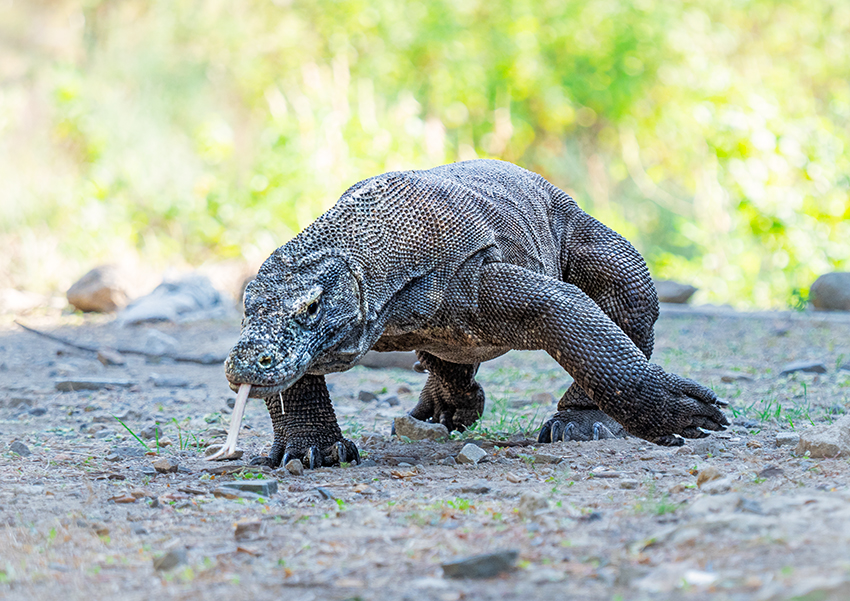
I’m hoping by now you would have read Part 1 of my ‘A Welcome Return’, all about joining La Galigo Liveaboard once again, but this time exploring the delights of Komodo National Park.
The trip was really starting to hot up, with great scenery above the water and great encounters underwater. It was the little critters that were stealing the show and it was about to get even better. Here is how the rest of the trip panned out…
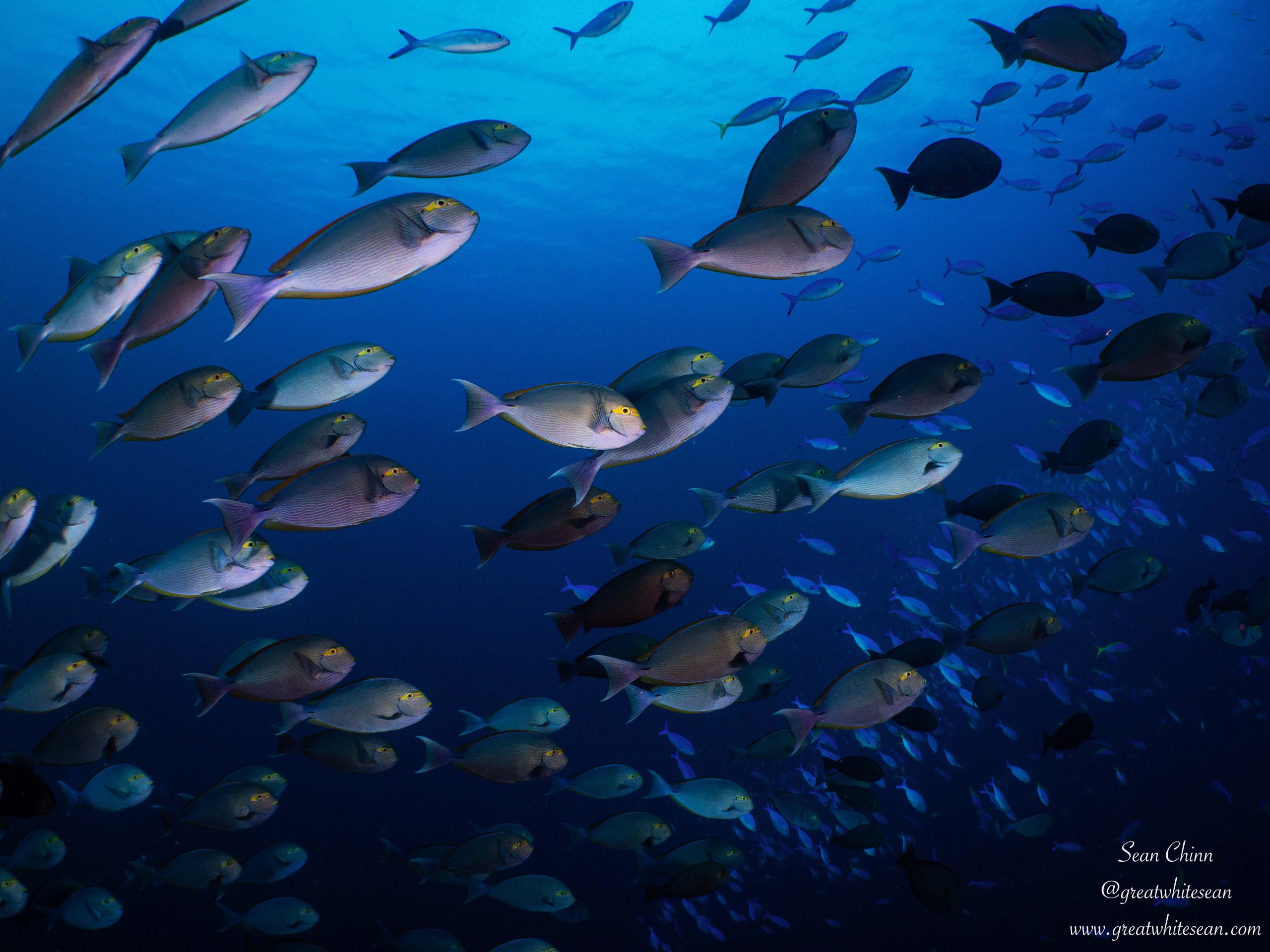
I was more than psyched for day 3. With a dive full of life to start with at ‘Castle Rock,’ followed by what should be an adrenaline-fuelled drift at ‘The Cauldron’ aka ‘Shotgun’, It was sure to be an adventure. Sure enough, once we descended along the pinnacle at ‘Castle Rock’ to around 25 metres, we were surrounded by an abundance of fish life. Numerous banner fish, schools of fusilier and surgeonfish swam in unison, while the odd friendly batfish would come to check each diver out. A distant school of jackfish were joined by the odd tuna and a circling whitetip reef shark to add the predators to the list of life. It was such fun floating amongst the amount of life before letting the current take us onto the reef. A few macro delights were waiting, as a blue ribbon eel and leaffish were spotted, alongside a friendly hawksbill turtle. This was certainly a dive that didn’t disappoint.
It was time for ‘The Cauldron,’ a notorious dive that struck fear into the hearts of some and was legendary to others. Tales of masks flying off in the current made for a little nerves before descending, but excitement from others about how the drift can shoot you through the channel between Gili Lawa Laut and Gili Lawa Darat. However, it was a little different for my dive and the current was fairly mild in comparison to what I expected. It still had enough current for a nice push through the channel and also provided some great marine life encounters. Another new shark species for me was a major highlight, as I finally got to see and photograph a bamboo shark. It was also the site for our only manta ray encounter of the trip. Unfortunately, the manta had passed my group before we saw it and we only got the tail end as it glided through the current away from us. A smaller mobula ray was also spotted at a distance, and a small school of bigeye trevally before… you guessed it… yet another friendly hawksbill on the safety stop.
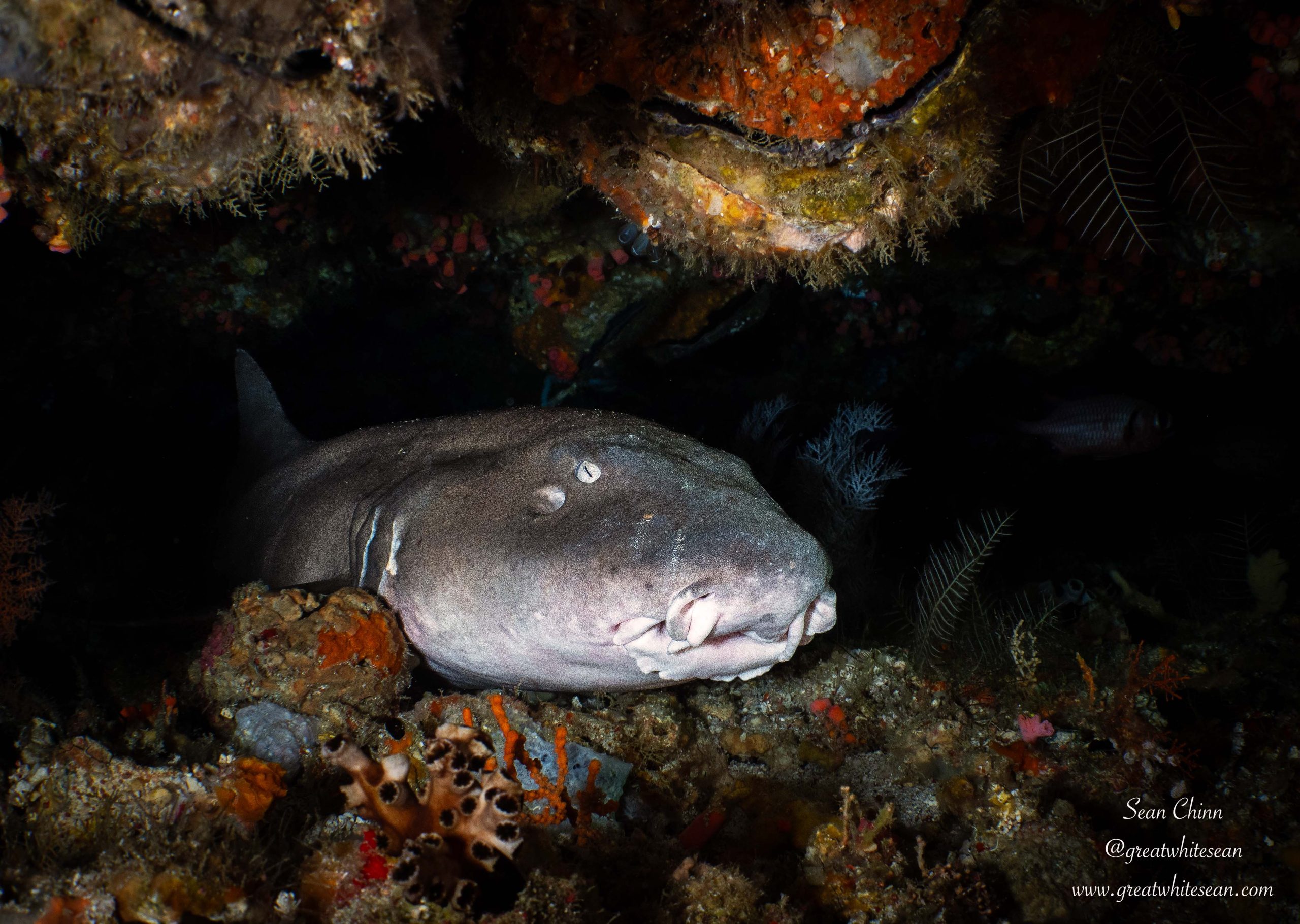
Day 3 was becoming the best diving day so far and I’d say the next dive at ‘Golden Passage’ was my favourite wide angle dive of the trip. I just love cephalopods and am a big fan of cuttlefish. Three rather large broadclub cuttlefish at the very start of the dive were more than welcome and provided great photography opportunities. We then had an amazing drift along the passage with a bit more oomph than ‘Shotgun’. More hawksbill turtles along the way, a sleeping bamboo shark in the overhangs, and a dancing school of fusiliers provided extra marine life joys. We finished the diving day with a night dive at ‘Gili Lawa Darat Bay’. Wow!!!! Once again, critters stole the show, along with a rather successful bobtail squid snooted photography shoot for me. Devil scorpionfish, nudibranch, flatworms, shrimps, squat lobsters and juvenile harlequin sweetlips made sure every single minute was interesting.
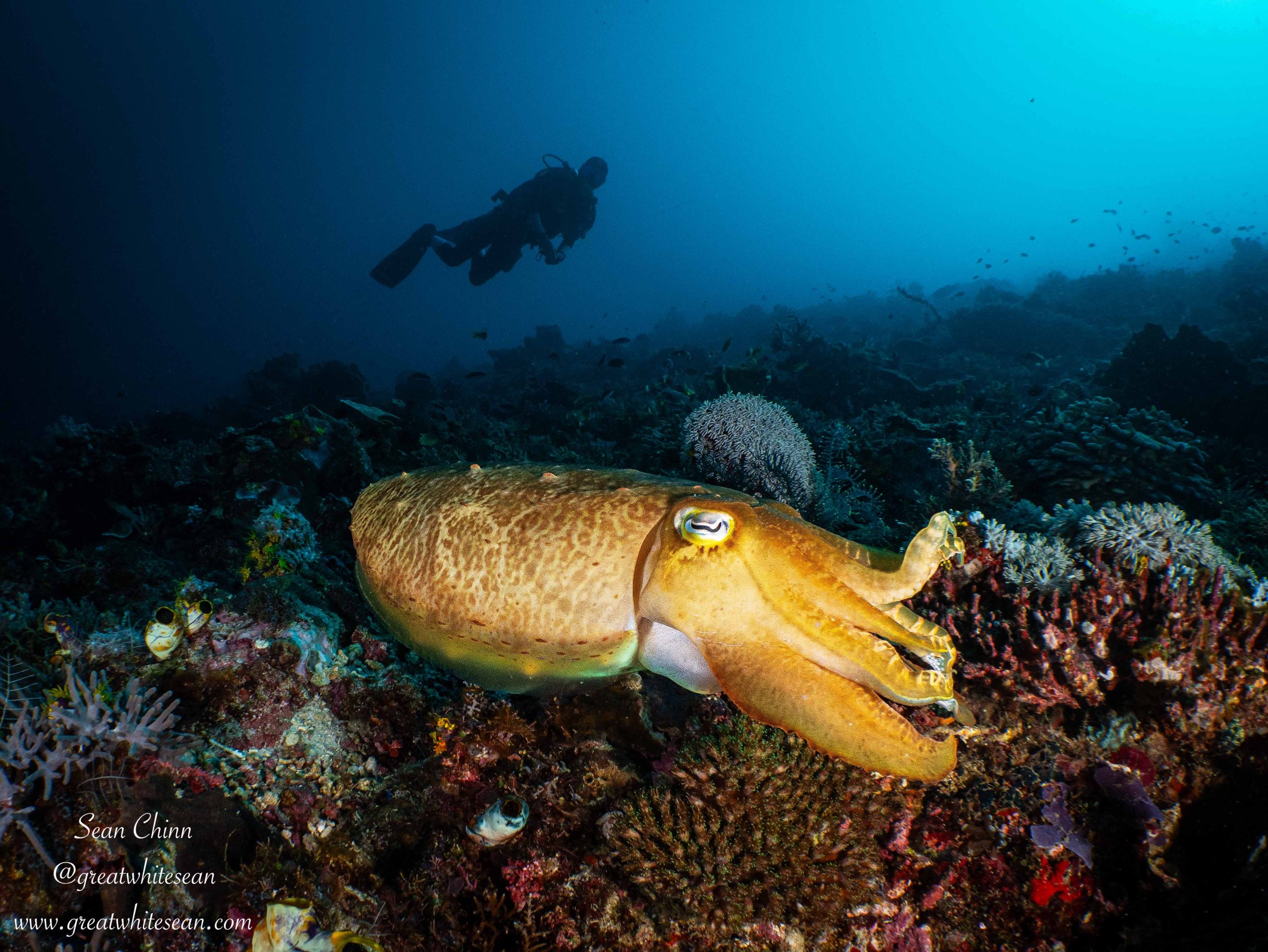
After a short documentary about Komodo dragons on the evening of day 3 to get us excited for seeing them, I was definitely more than excited! Day 4 was a day of giving it our best shot to get some great manta ray action. We started with another beautiful pinnacle reef around ‘Crystal Rock’. Small school of batfish, Napoleon wrasse, whitetip reef sharks, a blacktip reef shark and lion fish greeted us, before we moved on to try for mantas once again. Back to ‘Karang Makassar’ and a drift along the sand and rubble, passing small sections of coral formations that would act as cleaning stations. Unfortunately, we were once again unlucky with our manta ray sightings but this dive did deliver more interesting encounters: A bamboo shark resting out in the open before swimming off, green sea turtles, hawksbill turtles and, once again, a large broadclub cuttlefish.
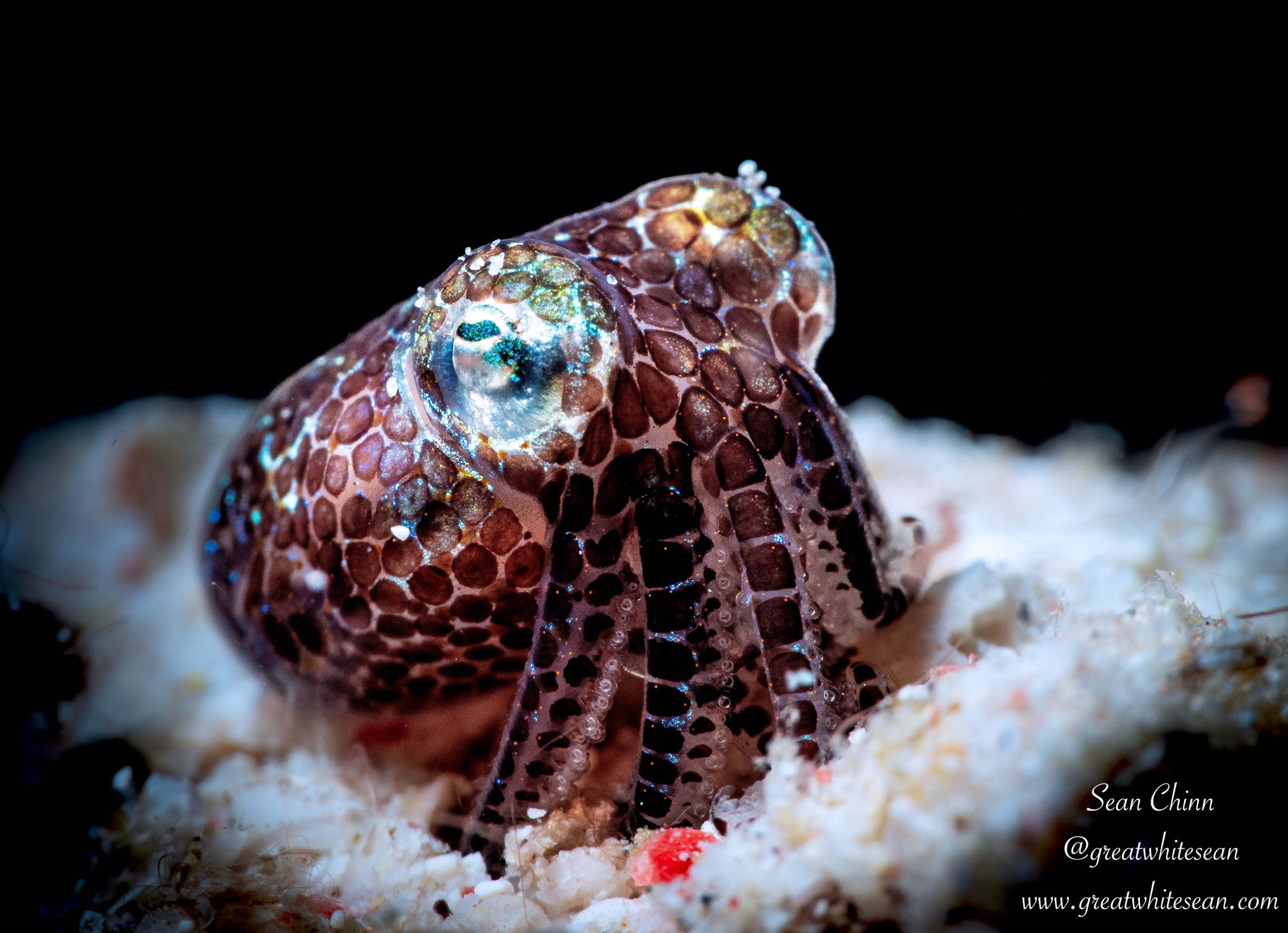
A final day dive at ‘Mauan’ in the hope of seeing mantas wasn’t much to write home about in this instance. We gave it our best shot with the mantas and that’s all we can ask of the accommodating crew onboard. Unfortunately, wildlife doesn’t always play ball and on another trip you could have some of the best manta ray action of your life. However, the final night dive of the trip more than made up for it. Wow, wow, wow!!! What a dive! With some of the most unique critters you can find. So much so, I have been asked to keep the dive site quiet in fear of the information getting to the wrong people and bad practice being at play. A shame it has to be that way but a necessity at times. While numerous species of nudibranch were spotted on the dive, it was the elusive ghost melibe that stole the show. A transparent nudibranch made up of white lines, giving it a skeletal appearance that was hard to photograph but soooo exciting to see!
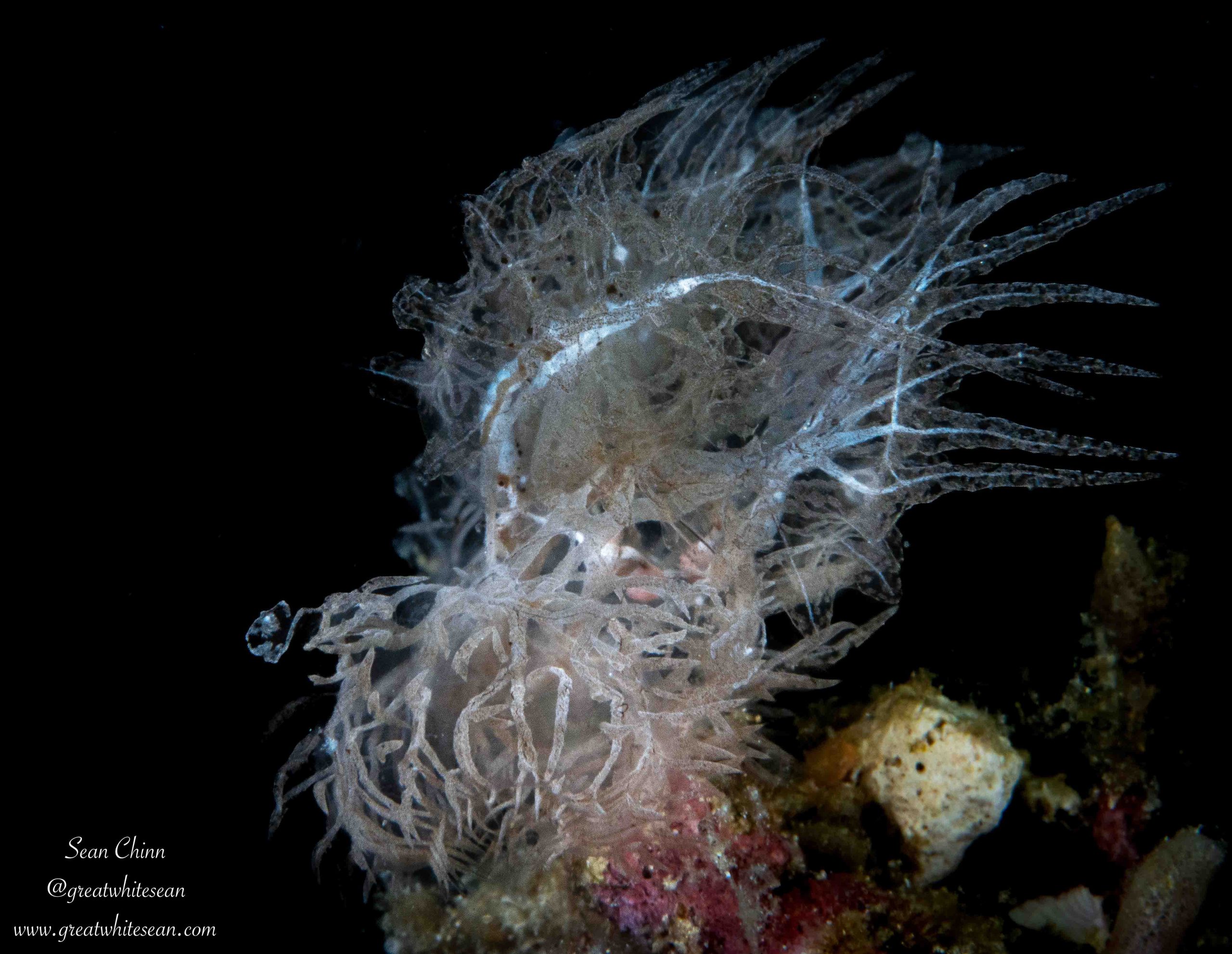
The unique critters didn’t stop there, as another highlight macro critter – the paddle flap scorpionfish – was spotted to the excitement of the guides and cruise director Fareez, who screamed and danced (with excitement!) underwater. Definitely a sought-after critter in the underwater photography world, and we had two join us for the dive. There was a lot of sand and sediment in the water, making it difficult for photography and I wasn’t completely ecstatic with the shots I got, but loved to see another new-to-me species. But guess what? The fun didn’t stop there, as a black frogfish was sitting under some broken coral just next to the scorpionfish. WHAT A DIVE!!!!!!
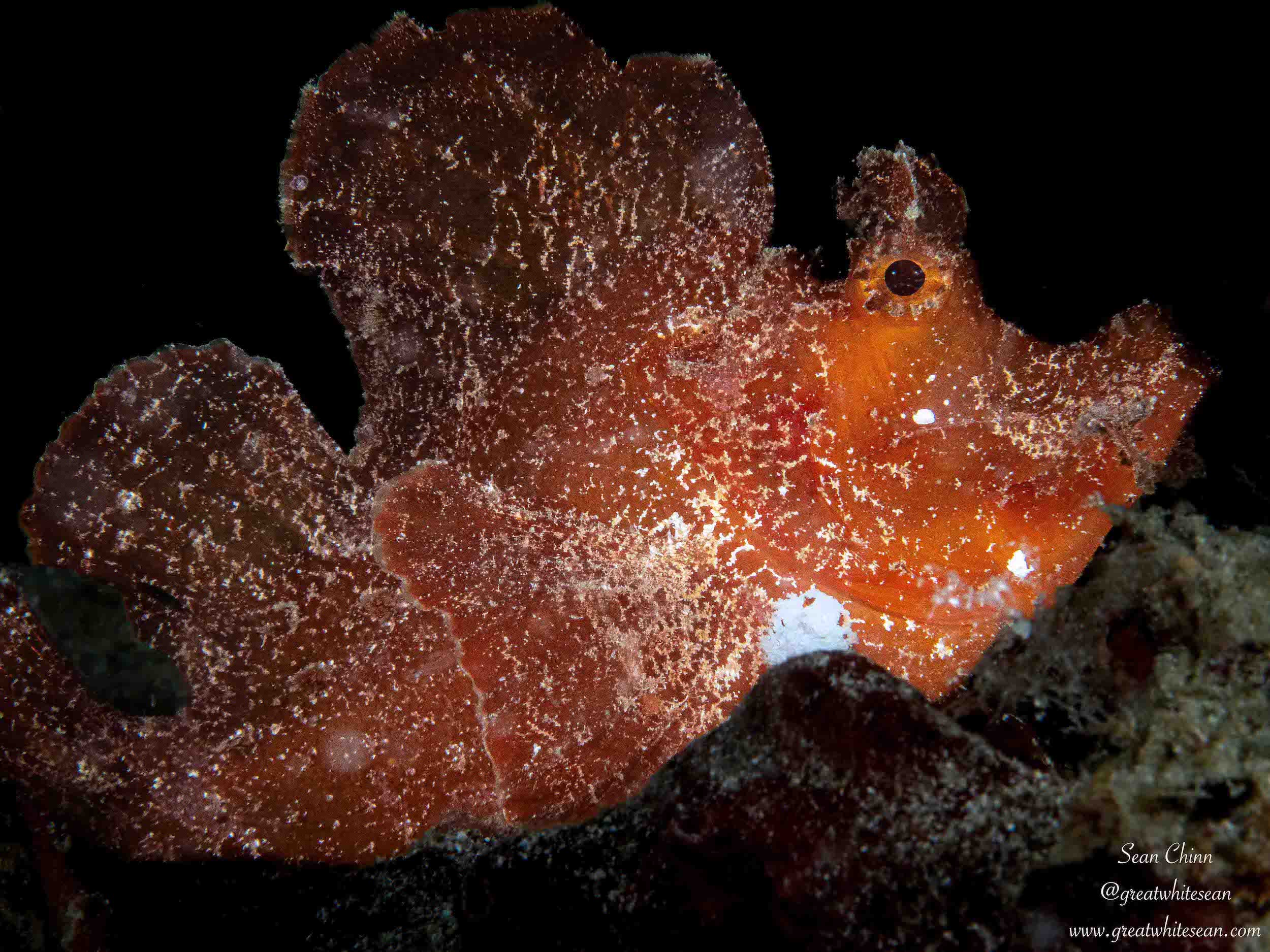
After such an incredible final night dive, the final day also finished the trip in incredible fashion, ensuring the need to return was firmly there. Starting with a first dive at Pengah, where a banded sea krait hunting throughout the reef was a great start, and more colourful coral formations around the pinnacle, with amazing hard coral just below the surface. It was a dive for wide angle and macro, as ladybugs, different nudibranch, and a leaf scorpionfish were found. As well as a large octopus working its way through the reef before hiding when we locked eyes. The final dive really put the icing on the cake. It was a macro dive amongst sand and rubble: numerous nudibranch again dazzled, with the ‘Pikachu’ nudi my favourite. Peacock mantis shrimp, spearing mantis shrimp, longhorn cowfish, orangutan crab, squat lobster and shrimp ensured a special dive before the grand finale – a thorny seahorse. What a dive and what diving for my five days in Komodo National Park.
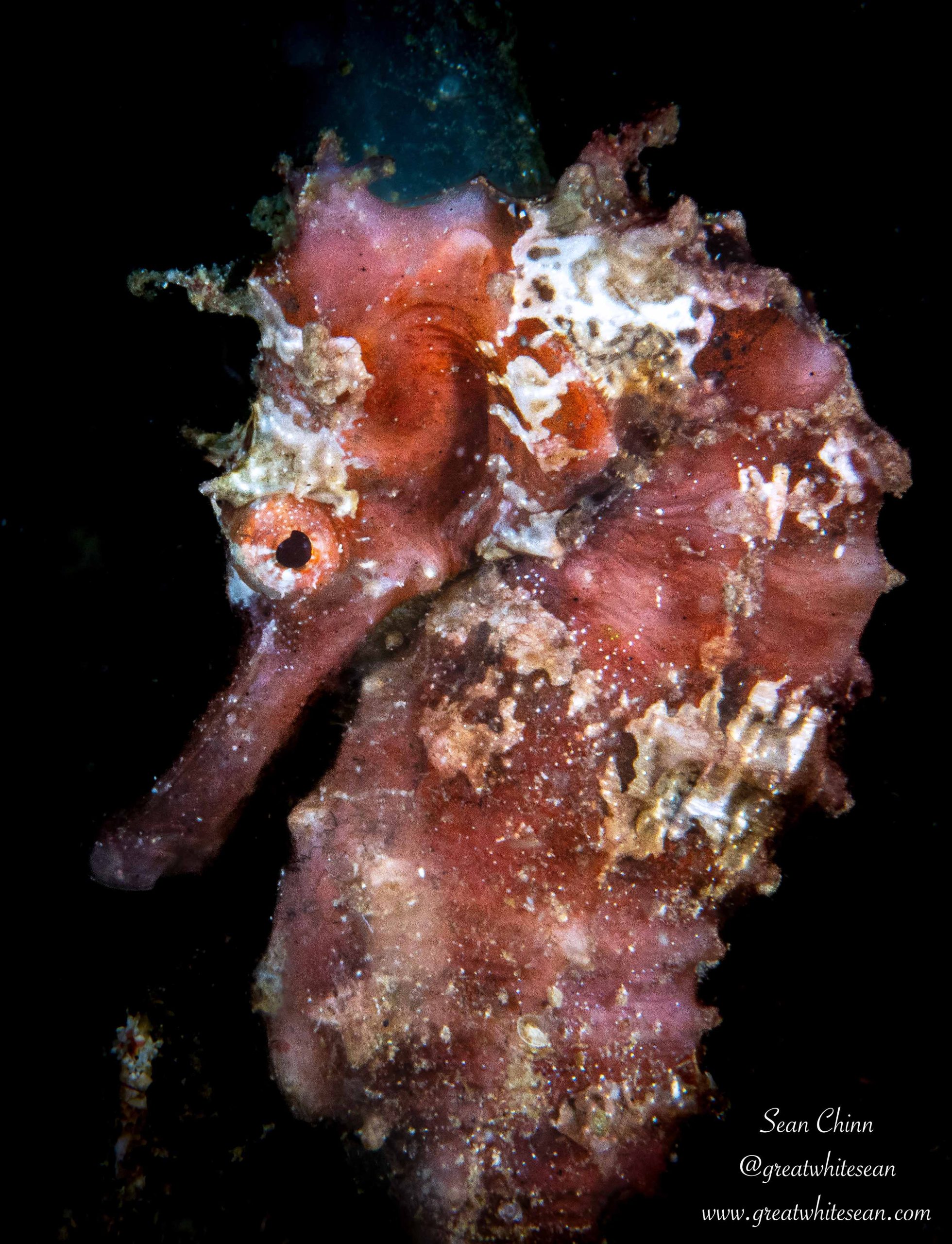
Well, the diving might have been over, but the trip certainly wasn’t. In fact, it was time for one of the tours I’d been looking forward to the most. Time to see Komodo dragons on Rinca Island. As much as I love liveaboards, it’s always nice to get back on land. A jetty led us onto a boardwalk path, where within minutes we laid our eyes on our first dragon, before getting closer to the information centre and seeing the big male that commands the area. Sprawled out on the floor, his size was immense. A great start but I longed for those close encounters and not looking down from a platform.
We were soon through the information centre and onto the wild ground to start our very short trek. We didn’t need to go far at all as a resting large female was just next to the information centre, followed by a small juvenile who came running through stealing all the attention. It was a little cutie and fun to see and photograph. Being a photographer, you always have images in mind before you go somewhere. I was desperate to get a large dragon postured up facing or walking to the camera. I quickly realised that these were lazy animals in the midday sun (as am I). It’s too hot and they risk overheating if they’re too active. I began to lose hope for the shot I wanted, as we trekked a short while up the hill and found another resting female. Amazing to see once again before it was all too soon ready to leave. I could have trekked so much more of the island.
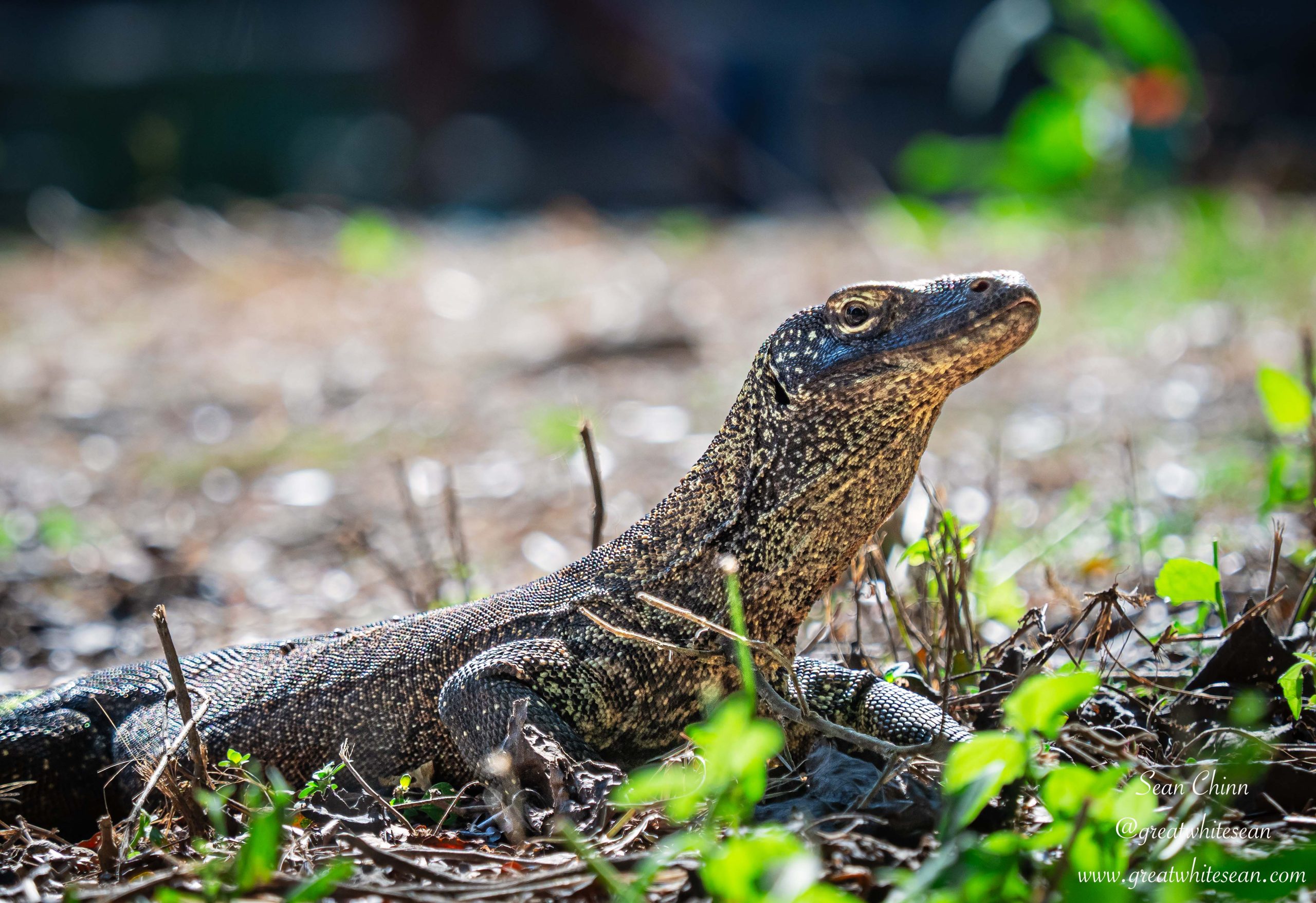
As we waited around the outside seating area of the information centre, I was going through my shots with Fareez and explaining the shots I was hoping for. He said maybe I would get lucky while we waited for the others to explore the gift shop. I knew I didn’t have long. Suddenly, some commotion back outside on the wild ground caught my attention. DOUBLE JACKPOT!!! I went flying out of the gate and there was a dragon walking directly towards me. Postured up, showing off its muscles, only made better by the fact that it was the huge male that swaggered into his arena. Showing off to his adoring crowd. I was completely made up and thankfully got some shots I was happy with. He slowly walked around using his tongue to taste all the flavours, before finally slumping on the ground, sprawled out in the shade.
My trip was now complete, or so I thought. I got what I wanted and was happy to return to my family completely content (apart from losing my drone that is!) That was until the grand finale, the little extra I didn’t know I needed, but it’s always those moments that separate a great trip from an unbelievably fantastic trip. The little extras that make you long to return.
Moored up at Pulau Kalong under an amazing sunset, we waited for the show to start. A spectacle that only nature can deliver soon ensued, as thousands upon thousands of flying foxes left their daytime roost on the island. Engulfing the orange sky with black silhouettes akin to the batman sign. They just kept coming and coming for the next hour or so before we enjoyed an amazing BBQ dinner on the top deck and an incredible show of songs and dance from the amazing crew. Another fantastic trip onboard La Galigo and I can only hope I’ll be back soon.
For more information about diving in Komodo:
Sean Chinn Instagram: @greatwhitesean
Email: sean@greatwhitesean.com
Whatsapp: +62 812 2000 2025
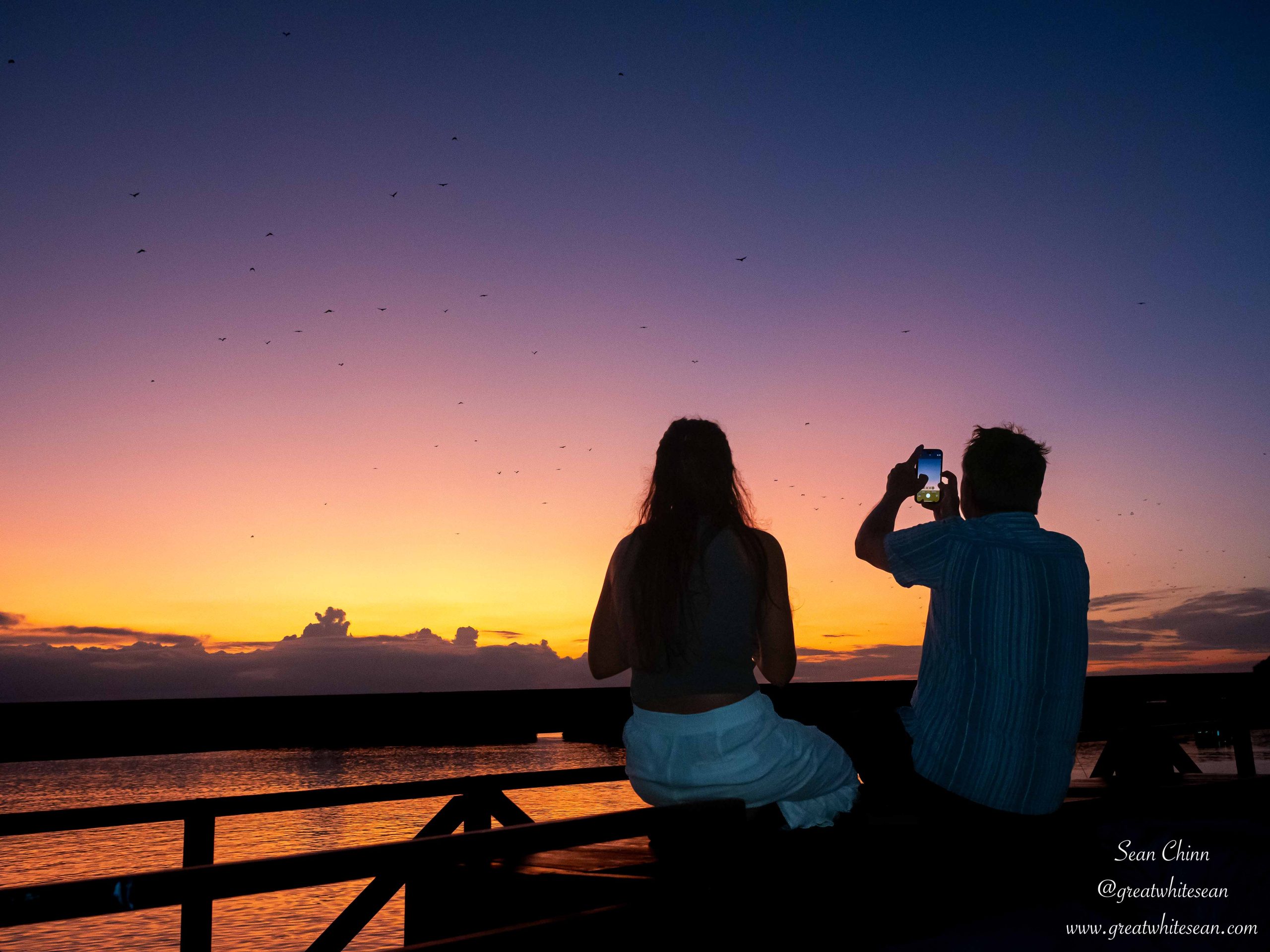
Blogs
A Welcome Return (Part 1)
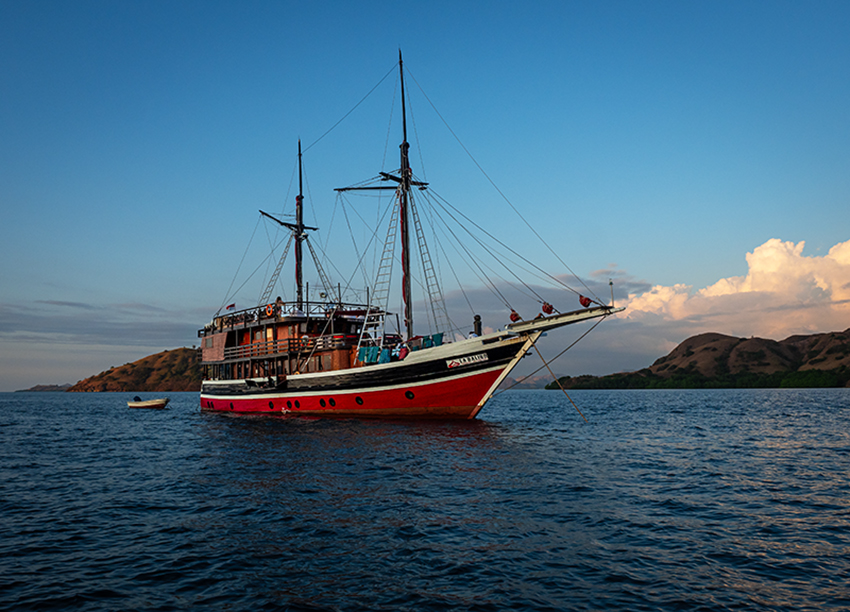
After an incredibly successful trip onboard La Galigo last October exploring Raja Ampat, I was so happy to jump back onboard. This time exploring another bucket list destination – Komodo National Park.
Strangely, it’s not the underwater world around Komodo that makes it such a bucket list destination for me. Growing up fascinated with the biggest species of each animal, the Komodo dragon has been a lifelong ambition for me to see. I was so excited to now get the opportunity, while also knowing the diving around the National Park would be way more than an added bonus. In my mind, Komodo was synonymous with crazy currents, mantas and some suspect visibility at times. I was expecting really tricky adventurous diving. What I found, was actually very surprising to me and left me with a very pleasant content feeling after the trip. Let’s find out what La Galigo’s Jurassic Komodo trip had in store…
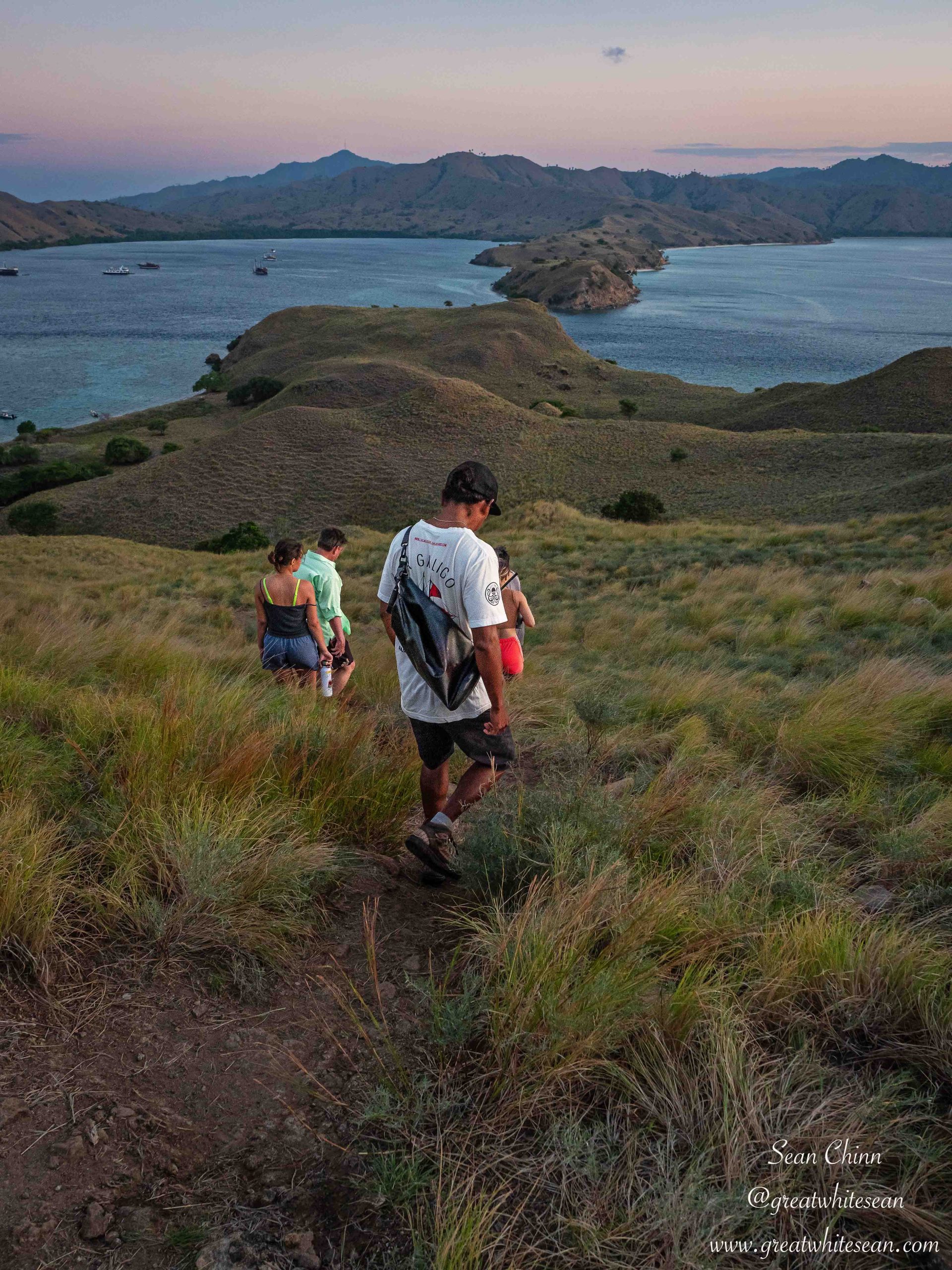
I was on a much shorter trip this time (6D/5N) compared to my Raja trip last year. Now, I’m going to try hard not to compare Komodo with Raja Ampat, but it is hard not to, after doing both trips relatively close in time to each other. However, what I found were two places that complimented each other so well. Their differences are part of their charm and the reason why both are must-do trips. This was evident in the contrasting landscape while exploring the islands around Komodo. The drier climate creating stunning rugged savannah islands rising from the clear blue waters. Covered in a mixture of yellow and green grass, creating a beautiful golden glow at sunrise and sunset. With isolated trees creating a focal point and hillsides leading into idyllic white sand beaches. Another breathtaking area to explore and no better way than to sail from island to island.
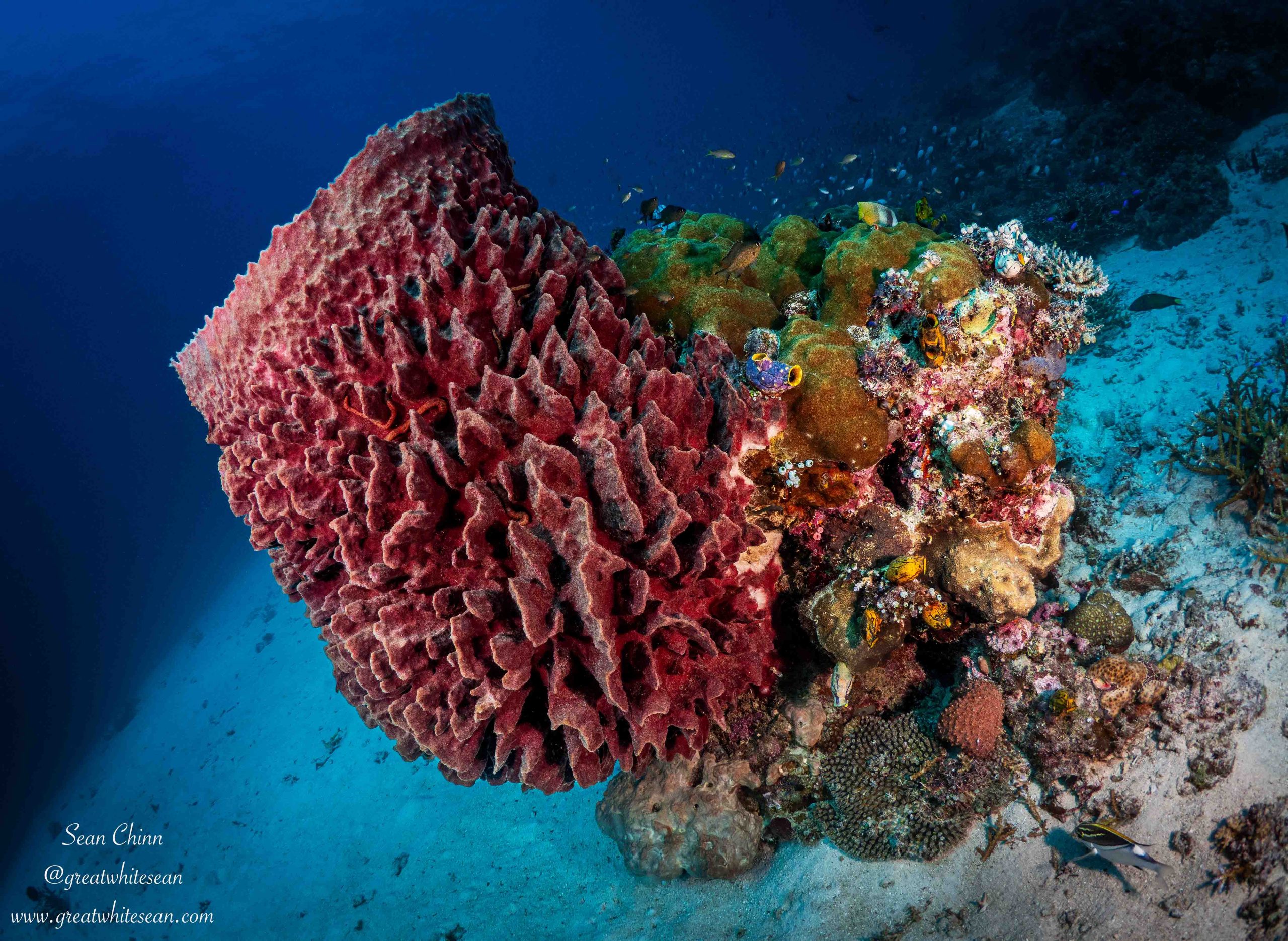
11 guests were onboard for my trip and diving was split into three groups, no more than four divers with each dive guide. A spacious dive deck plenty big enough for the number of guests onboard and two speedboats transporting us to each dive site. An extremely helpful crew providing a comfortable journey and making sure we barely had to lift a finger. The food onboard was again super delicious, with the Soto Ayam being a highlight, while the beef rendang again had my mouth watering. With spacious rooms throughout and comfortable beds and pillows, another relaxing stay was on the agenda between dives. Speaking of dives, let’s see what underwater had in store…
Apologies!! I am going to compare Komodo and Raja Ampat one last time, this time in relation to the check dive. In my mind, before I had dived both, I had Komodo as the place with crazy currents and sometimes poorer visibility, with Raja as the opposite. My check dives couldn’t have been further from what I had imagined. While my dive in Raja was limited vis and a relatively strong current, diving in Komodo started super relaxed, with next to no current and some amazing visibility at ‘Sebayor Kecil’. Such a pleasant start to my Komodo trip with beautiful reefs full of healthy hard and soft coral. Yellow snapper swimming in unison, lion fish, crocodile fish and a blue spotted stingray welcoming me nicely to life underwater in Komodo.
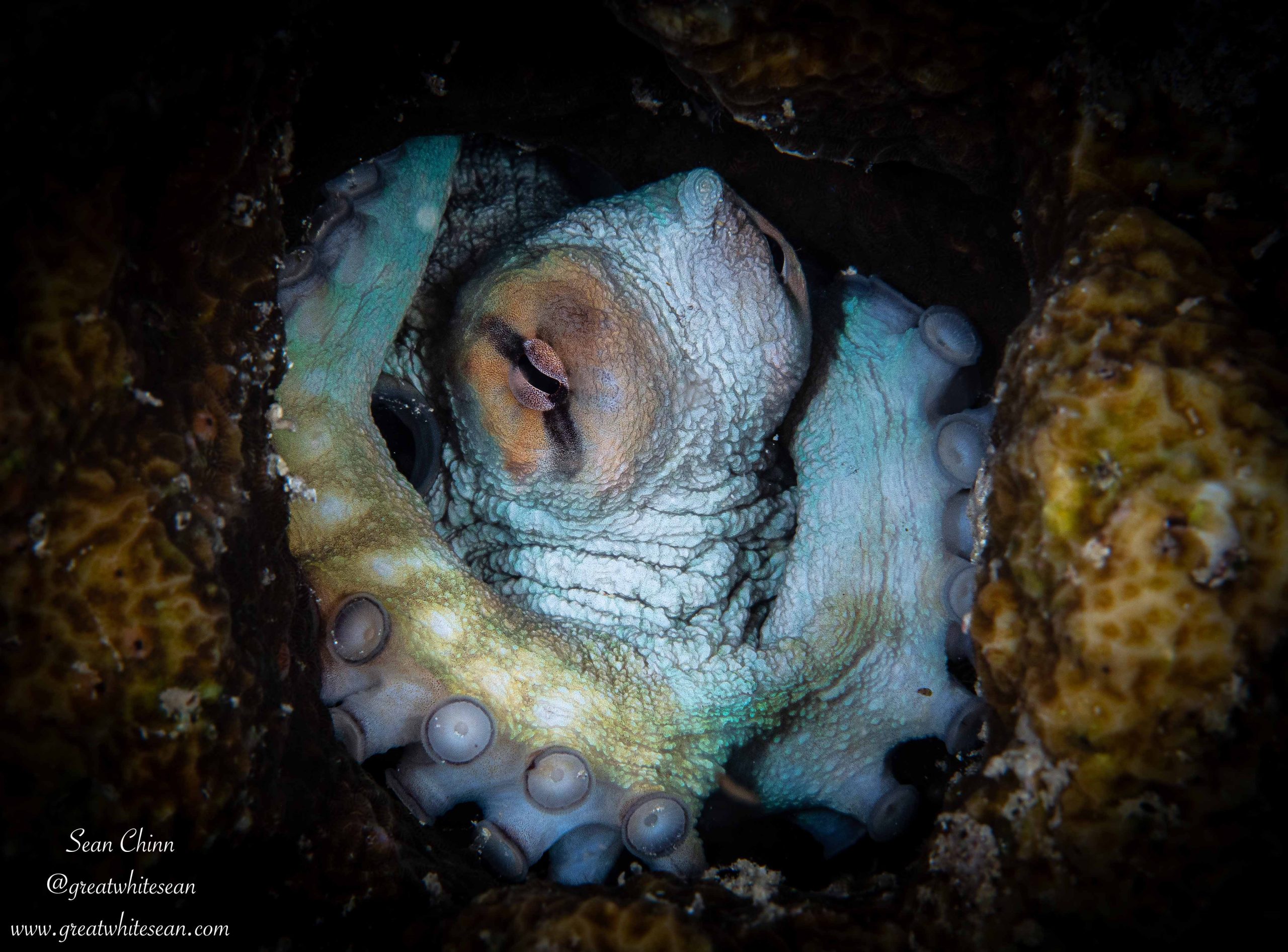
Following on from such a relaxed dive, I soon realised it was the little critters that were going to steal the show in this beautiful paradise. The first night dive at ‘Sebayor Besar’ showed me what treats I had in store for the trip. With a very small red octopus only few centimetres in size, followed by a larger reef octopus. Nudibranch, peacock mantis shrimp, crabs and more made sure every minute of the dive was enjoyed before getting back onboard. The night wasn’t finished, as a fun game of ‘Cards Against Humanity’ broke the ice with everyone onboard and was the perfect example of why I love liveaboards so much. Meeting people from all walks of life while confined to life onboard broadens your horizons. It was a great laugh with a great group.
The next day followed on with some more beautiful reefs full of life. ‘Tarawa Besar’ and the magical ‘Batu Balong’ were the dive sites of choice. A mixture of stunning hard coral formations and vibrant soft coral dazzled like a Van Gogh painting full of colour. It was also the introduction of some friendly turtles, in particular a number of hawksbill that quite happily swam between divers and allowed for close interactions. A grumpy green sea turtle was the highlight for me, as it rested amongst the coral in the final moments of ‘Tarawa Besar’. I just love their patterned shell.
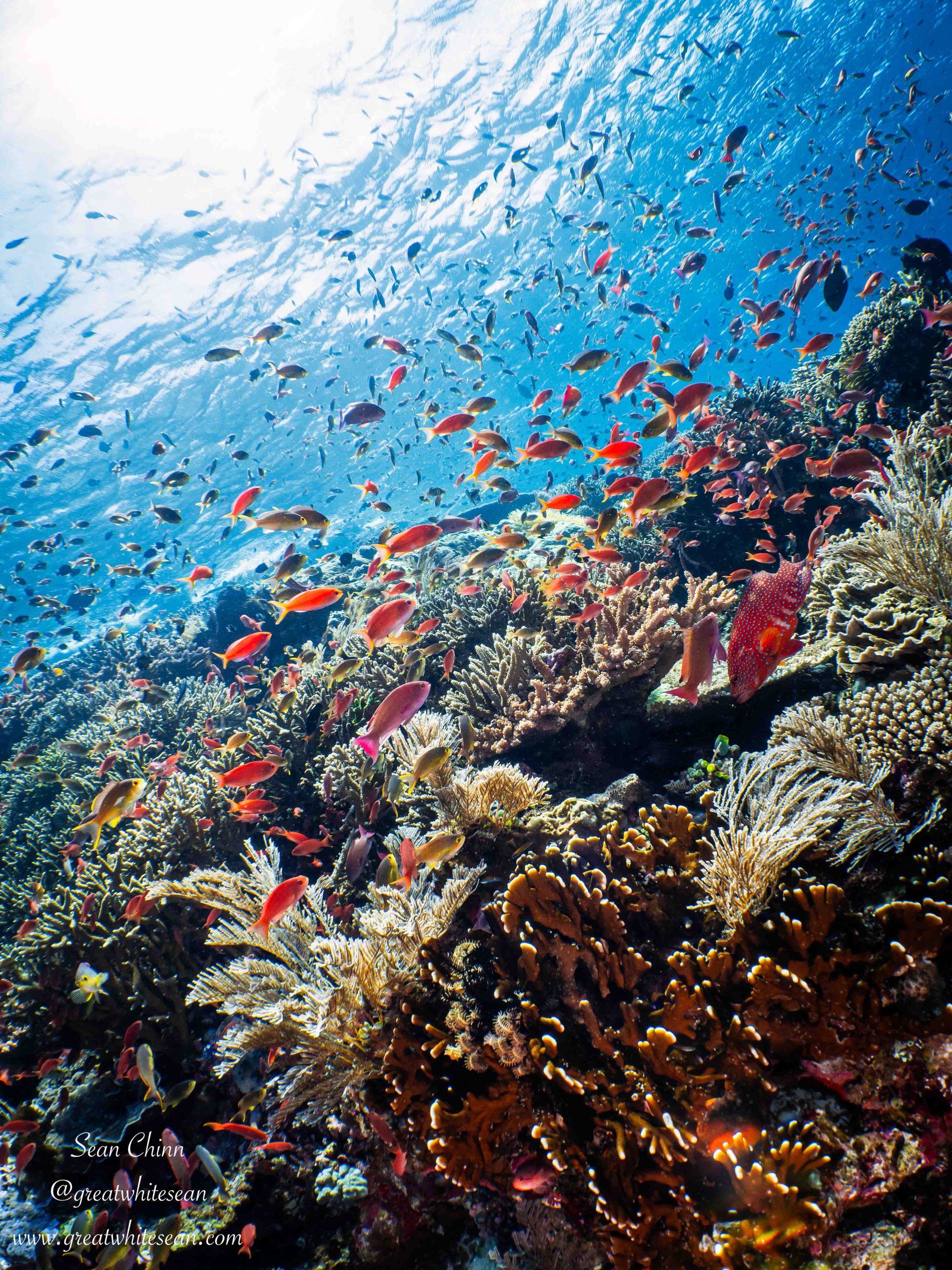
Whitetip reef sharks, scorpionfish, a giant pufferfish, moray eels and more made sure it wasn’t all about the turtles. And, to be honest, the dancing anthias on top of ‘Batu Balong’ amongst the pristine hard coral provided the bliss on the safety stop. A delightful end before disappointedly, I finally got unlucky with manta rays on dive three. We were at ‘Karang Makassar’ in the hope of drifting along the rubble and sand to get lucky with a moment with some majestic mantas. I’m normally quite lucky with manta rays and have had some pretty wild encounters around the world over my diving life. However, this time nature unfortunately didn’t play ball. Fingers crossed for next time!!
Thankfully it didn’t take away from what was another amazing day in Komodo. A sunset trek on Gili Lawa Darat got us back on land and we enjoyed the amazing scenery. Incredible views over the bay and the island resembling a snake head were made even more enjoyable by yet another gorgeous sunset. With deer roaming free, it was a great mini adventure, getting a close-up view of these rugged savannah islands before another fantastic night dive at Komodo Bay.
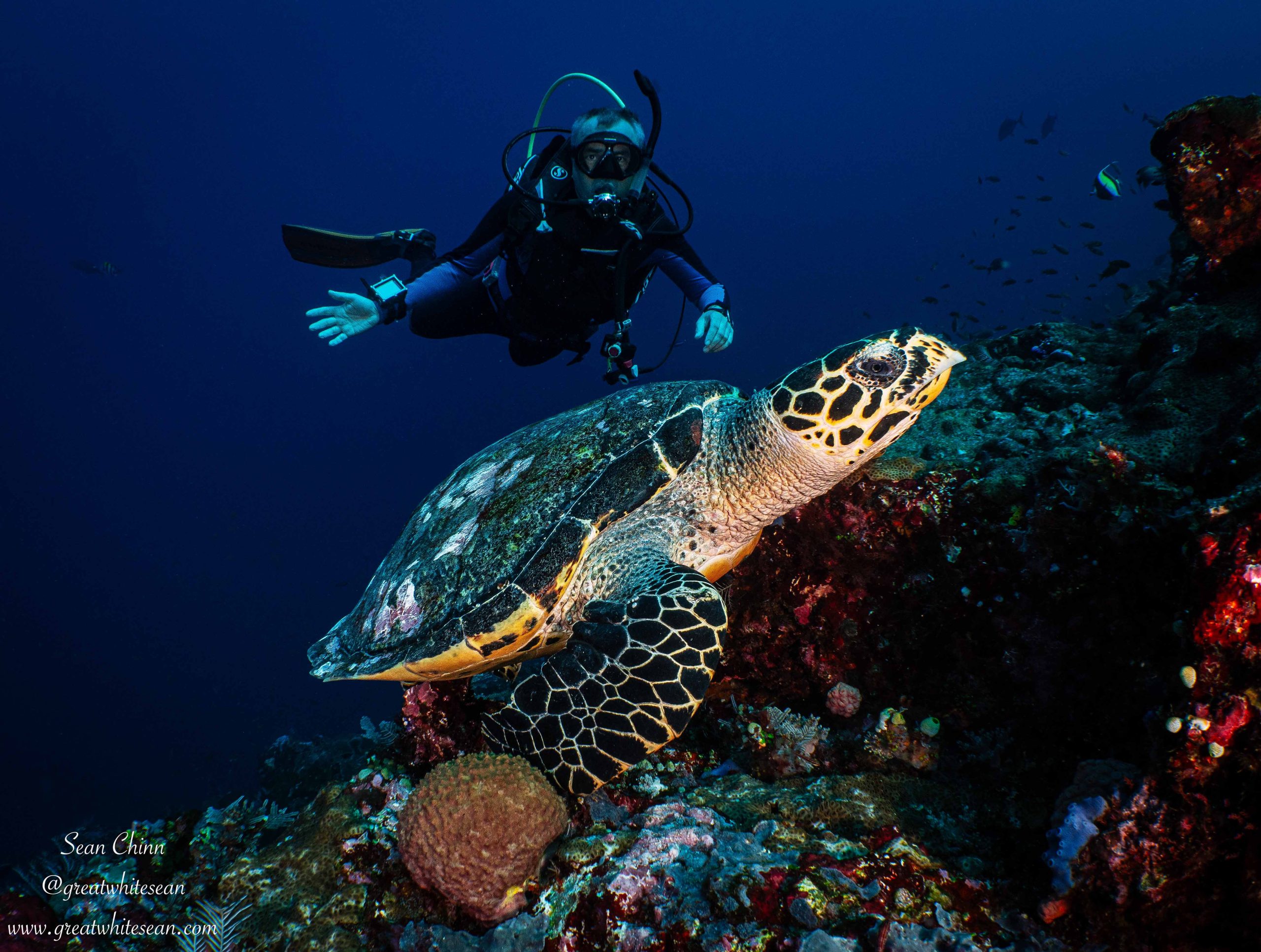
Numerous nudibranch were spotted and even a flatworm working its way over a scorpionfish’s head and eye provided some funny entertainment. I’m a sucker for a cuttlefish, so getting the chance to see and photograph a small one is always special. However, the most unique critter was the Lembeh sea dragon. Such a cute and surreal-looking creature that unfortunately wasn’t in a great position for photography. Hopefully I’ll get another chance one day and capture its unique beauty.
What a great start to life in Komodo onboard La Galigo. Be sure to stay tuned for part 2 and see what delights awaited us.
For more information about diving in Komodo:
Sean Chinn Instagram: @greatwhitesean
Email: sean@greatwhitesean.com
Whatsapp: +62 812 2000 2025
